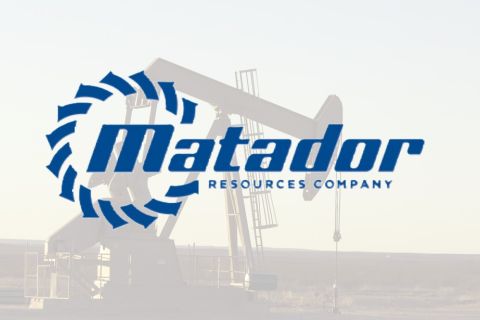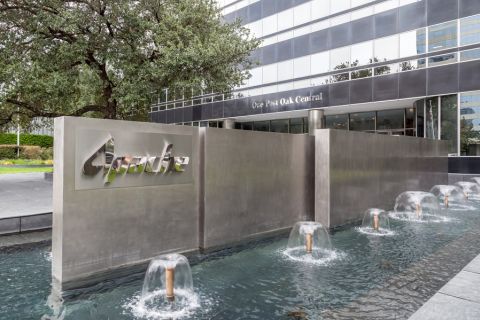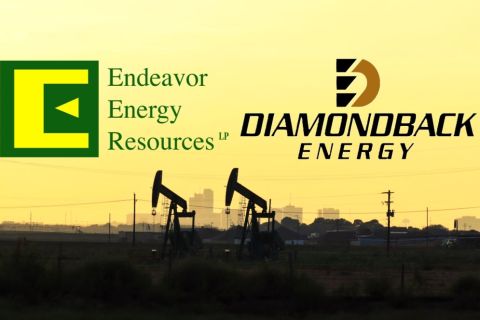The midstream sector, and the take-away issues therein, are not the sole purview of the midstream sector anymore. Increasingly, upstream operators are looking for new gathering and processing for their fields, and new interconnects to get to high-value markets.
In fact, in some areas, liquids are still moved, 1920s-style, by trucks. For example, some Bakken oil producers are suffering from greatly reduced netbacks, the amount they actually get paid for their oil, after paying for truck-haul take-away. Who wants $60 oil when elsewhere the price tops out at $110 per barrel? Yet, shutting in wells is not an option, at least for now, although delaying well completions is.
Elsewhere, resource plays such as the Marcellus and the Eagle Ford shales are facing take-away constraints as new wells and high initial production rates bring more oil and gas to the surface, and more exploration and production companies flock to the hot spots to get in on the action, further increasing production.
As a result, it's becoming commonplace to see impatient upstreamers build their own gathering systems, particularly for gas plays, and later monetize those as nearby infrastructure matures. Thankfully, newly formed midstream companies, many backed by private equity, are eager to buy the assets and begin buildouts of their own.
In April, several new midstream firms were formed or went public (see "Transaction Line" in this issue), and more are on the way.
These challenges, and more, were discussed by speakers at Hart Energy's Developing Unconventional Gas 2011 Conference and Exhibition held in Fort Worth on April 19 and 20. Typically, the annual conference focuses on upstream matters, but this year more than a few speakers touched on the gathering, processing and transmission industry as they voiced frustration at the lack of infrastructure in emerging oil and gas plays.
Some speakers cited data from the Energy Information Administration to show the tremendous production growth that will require service. To wit, the U.S. agency predicts shale production will grow at a compound annual growth rate (CAGR) of 8% from 2010 to 2015, and at 3% CAGR to 2035. By 2020, shale plays will be producing 50% of all U.S. gas supply. The question of whether midstream developers can keep up was raised—and some speakers are confident they can.
"The midstream industry is meeting the challenge," contends Don Raikes, vice president, transmission marketing and customer services for Dominion Transmission Inc., a unit of Dominion.
Yet, a significant amount of time is required to get service in place, according to Robert G. Phillips, chairman, president and chief executive of Crestwood Midstream Partners LP, formerly known as Quicksilver Gas Services LP.
"We think it takes several years to complete a full-cycle capital investment program in a shale play. We need to move right along with the producers from a play's inception to its fast-growth phase to mature development," he says.
Also, the very nature of gas-supply infrastructure has changed, explains Raikes, pointing to the large number of liquefied natural gas (LNG) regasification terminals on the books only a few years ago. In fact, according to Hart Energy research, more than 50 LNG terminals were either existing or proposed for North America, due to the lack of adequate gas production in the U.S., in the spring of 2005. Yet, only four were actually built. Later, new gas supply from the Rocky Mountains was hailed as the answer.
Now, the Marcellus shale in our own backyard is the answer, says Raikes, noting that some experts predict Marcellus production will reach 10 billion cubic feet per day in 2020, too much for the Northeast market to absorb.
Meanwhile, the rapidly expanding Eagle Ford shale play has a clear need for additional midstream facilities. In response, Enterprise Products Partners LP's president and chief executive, Mike Creel, speaking at the conference, said the company is eager to expand its operations in the area as commitments increase.
Also at the conference and talking about energy was keynote speaker and former U.S. President George W. Bush.
Recommended Reading
Matador Bolts On Additional Interest from Advance Energy Partners
2024-02-27 - Matador Resources carved out additional mineral and royalty interests on the acreage it acquired from Advance Energy Partners for $1.6 billion last year.
APA Closes $4.5B Callon Deal, Deepening Permian Roots
2024-04-01 - About two-thirds of Apache’s daily production will come from the Permian Basin after APA Corp. completed its $4.5 billion takeout of Callon Petroleum.
Analysts: Diamondback-Endeavor Deal Creates New Permian Super Independent
2024-02-12 - The tie-up between Diamondback Energy and Endeavor Energy—two of the Permian’s top oil producers—is expected to create a new “super-independent” E&P with a market value north of $50 billion.
Exxon Closes $60B Pioneer Deal, Reshaping Permian Basin
2024-05-03 - After facing regulatory scrutiny, Exxon Mobil closed a roughly $60 billion acquisition of Pioneer Natural Resources. The largest shale oil transaction ever signed will reshape the order of power in the vast Permian Basin oil field.
EIA: E&P Dealmaking Activity Soars to $234 Billion in ‘23
2024-03-19 - Oil and gas E&Ps spent a collective $234 billion on corporate M&A and asset acquisitions in 2023, the most in more than a decade, the U.S. Energy Information Administration reported.





